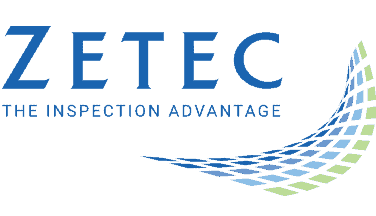Advanced Testing Instruments for NDT Opens up New Options
When we talk about non-destructive testing (NDT), much of the emphasis seems to fall upon the technologies that simplify the data collection process. However, inspection, data collection, data evaluation, and analysis technologies make a complete team, and enhancement of the entire NDT process requires advancement in each of these individual steps.
While much technological advancement has been made to ease the scanning or data collection processes through more advanced inspection tools and probes, in recent years, industries have also started developing new tools and features to simplify data interpretation for increased speed and efficiency. With the help of features such as time-reversal and distance gain size tools from advanced testing instruments, NDT methods like ultrasonic testing (UT) are bound to be simpler and reliable through their excellent flaw detection and characterization ability.
Enhanced Data Interpretation with Advanced Testing Instruments
To perform NDT inspection, technicians often have to process a wide range of data formats such as scan images or signals. The analysis, however, can be complex, especially when dealing with composite materials, complex geometries, or variable thickness components. Advanced testing instruments can facilitate the simplification of the inspection and data analysis processes utilizing the following techniques.
Time Reversal Technique
For phased array ultrasonic testing (PAUT), the time-reversal technique combines advanced UT software, instrumentation and high-performance probes to deliver high-quality signals in real-time, especially in the inspection of complex composite structures. To do so, the technique utilizes time of flight from each individual transducer of the PAUT probe to create a surface profile of the component being inspected. The advanced software can analyze the reflected beam and varying times of flight to inspect for any delays in comparison with the surface profile. Utilizing delay laws, the time-reversal technique can successfully obtain the normal incidence despite the complexity of the surface geometry.
In the NDT data interpretation process, the time-reversal technique facilitates:
- Accuracy of data while compensating for probe misalignments
- Real-time image display
- Flexibility in the inspection of varying geometries and surface thickness
- Speedy inspection and reporting capabilities
Distance Gain Size Method
This method acts as a sizing technique in PAUT analysis and is mostly seen utilized in heavy forging and welding inspection. The technique utilizes a distance gain size (DGS) curve to compare the reflectivity of the flaw with the reflectivity of the flat bottom hole (FBH) at the same distance or depth from the probe to identify the equivalent reflector size (ERS). Small reflectors may include inclusions, FBH, or blowholes, while large ones can include backwall.
While manual comparison is possible, advanced testing instruments facilitate the automated formation of curves and calculation of ERS. The comparison of the amplitude from the reflectors and the back-wall echo of the component with the DGS curve facilitates the evaluation and quantification of the flaws.
With features such as the DGS tool in advanced testing instruments, NDT can facilitate data interpretation by:
- Enabling calibration, taking into account the varying refracted angle and the focal depth
- Calibration of the sensitivity setting for enhanced flaw detection
- Easy visualization of the DGS curve with an A-scan for enhanced data analysis
Identifying Opportunities with Advanced Testing Instrument for NDT
An advanced testing software platform such as UltraVision from Zetec can take a complex inspection process and simplify testing procedures. For composites, using the time-reversal method, inspection personnel are able to analyze the varying reflected beams and compare them with the surface profile to accurately analyze the flaws. For large forgings, the distance gain size tool can easily compare the beam amplitudes and utilize the DGS curve to identify the intensity of the actual flaw. With the advanced data interpretation capabilities of each of these approaches, paired with advanced testing instruments, NDT technology can move in a way of acquiring accuracy and speed in inspection and interpretation. These improved tools not only enhance the reliability of results but also open up the way for advanced NDT instruments to further facilitate productivity.
Zetec has been a trusted source for advanced non-destructive testing instruments and services for decades and has been at the forefront of technological innovations that suit your NDT needs. For improved accuracy, efficiency, and reliability requirements—contact Zetec today.






